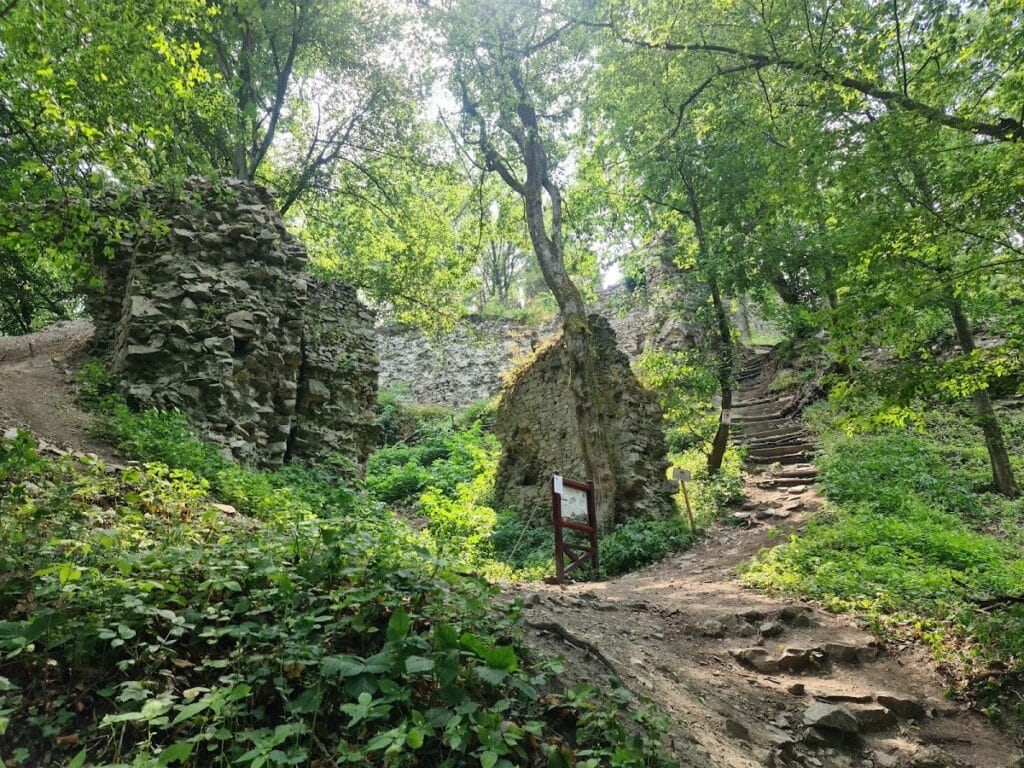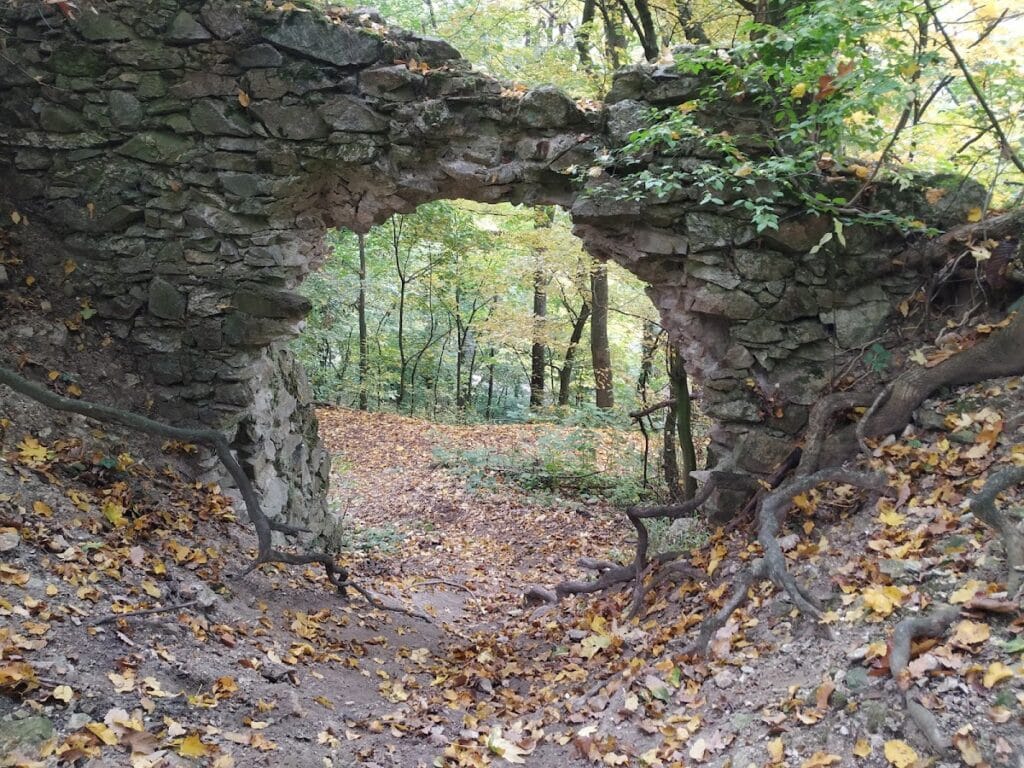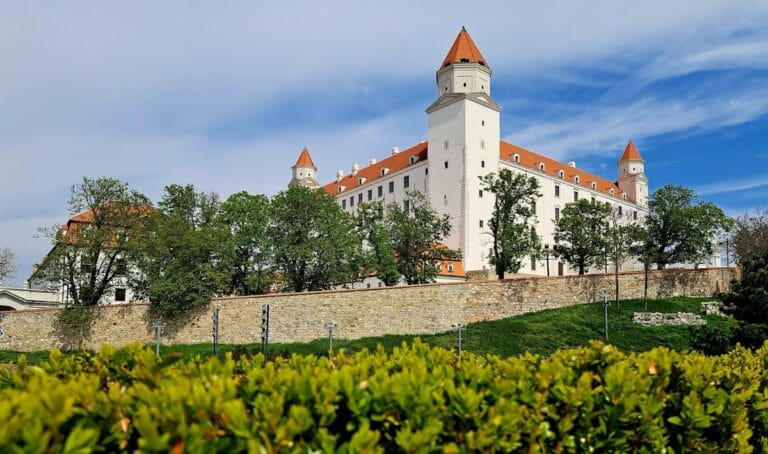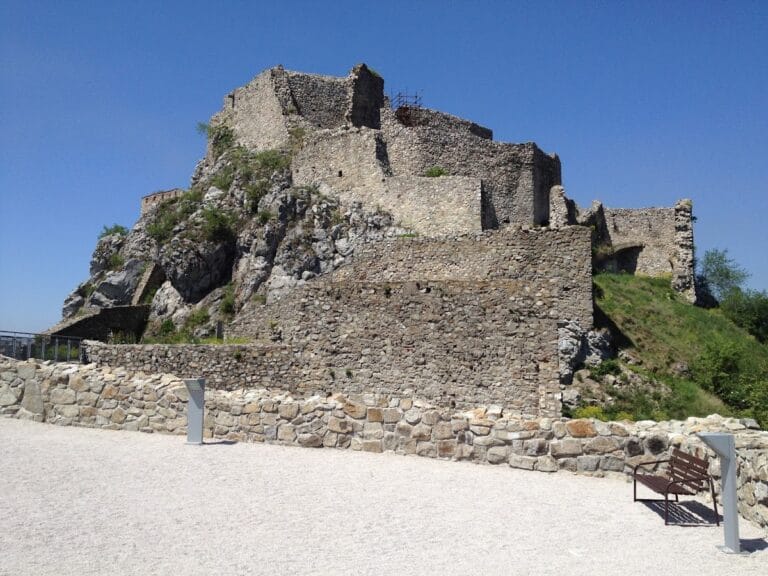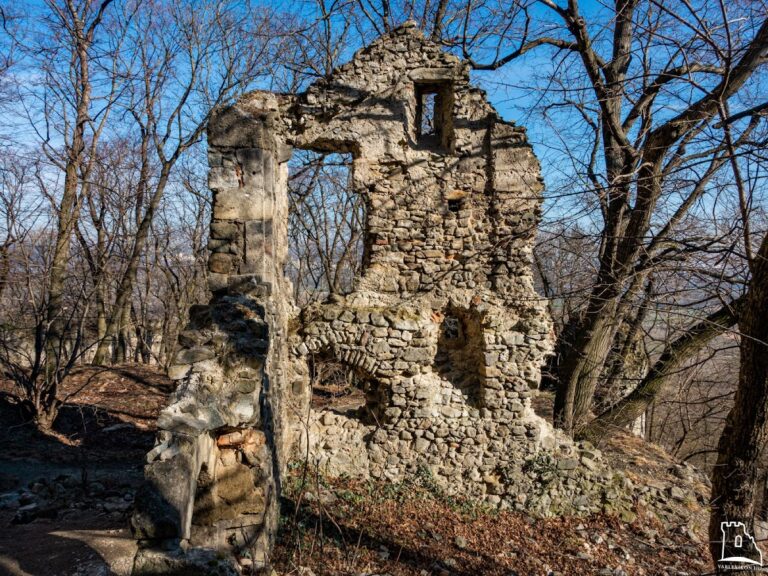Biely Kameň: A Medieval Castle Ruin in Slovakia
Visitor Information
Google Rating: 4.6
Popularity: Low
Google Maps: View on Google Maps
Official Website: www.hradbielykamen.sk
Country: Slovakia
Civilization: Medieval European
Remains: Military
History
Biely Kameň is a castle ruin situated on a wooded hill above the town of Svätý Jur in Slovakia. It was built by medieval European nobility as a fortified residence, taking over from an earlier fortification that stood across the valley dating to the 9th century.
The castle’s origins trace back to before 1271 when Count Abraham I established it as a stronghold to replace the older defensive site. Its first historical reference appears in that year, recording the castle’s capture by King Ottokar II of Bohemia. Towards the end of the 1280s, it experienced another military challenge when forces loyal to the Habsburg Duke Albrecht I seized it. These episodes reflect the castle’s strategic importance amid regional power struggles during the late Middle Ages.
Throughout the latter part of the 14th century, descendants of the original planter undertook a Gothic reconstruction of Biely Kameň. This renovation expanded the complex by adding an outer defensive area, multiple towers, enhanced storage facilities, and a Gothic chapel, underscoring its dual military and residential functions. The castle remained in the hands of local noble families until 1543, when their lineage ended. At this point, the castle came under the control of Ferdinand I, Holy Roman Emperor and King of Hungary, who granted it as a leased property to Gaspar I, a military commander. Its location made it significant in the defense against Ottoman incursions, although reports from the mid-1500s already described the structure as deteriorating.
Gaspar II, nephew of Gaspar I, was the last to maintain the castle as his seat. Control later passed to the influential Pálffy ab Erdöd family during the 1600s. However, Biely Kameň was abandoned following a destructive raid by Crimean Tatars in 1663, a violent episode tied to broader Ottoman raids in the region. After centuries of use, the castle fell into ruin. In recognition of its historical importance, it was declared a national cultural monument in 2002. Restoration efforts by the volunteer group Castrum Sancti Georgii began in 2020, seeking to preserve what remains.
Remains
The site of Biely Kameň originally covered a sizable area atop its hill, with a roughly rectangular upper enclosure fortified by thick walls. The eastern side of the fortifications remains best preserved, featuring a short wing built with Gothic-style brick vaulting that hints at the castle’s medieval architectural upgrades. Along the northern courtyard, a large vaulted cellar endures, offering insight into the storage functions within the castle complex.
The inner section of Biely Kameň was surrounded by an irregular oval-shaped outer wall, which had only one gate located on the northeastern side. This entrance was fortified by a bastion locally known as the “erkel.” The gate was reached by crossing a bridge over a dry moat, a defensive feature designed to hinder attackers. In addition to the gate tower, there were two other towers situated outside the inner fortifications. Farm buildings, including a house serving as a bakery, were positioned along the inner perimeter of the outer walls, indicating the castle supported both military and everyday household needs.
Within the castle, numerous chambers were built on its higher and lower levels, reflecting a layout capable of housing substantial personnel and supplies. A system of ceramic water pipes connecting Biely Kameň to the nearby town of Svätý Jur was discovered, demonstrating advanced planning in water management for its inhabitants. Historical records from 1412 describe two main towers—one large central tower and a smaller one—with structures arranged in two rows along the longer sides of the castle’s rectangular plan. Among these buildings were a chamber, a residential palace, and a chapel that contained a cellar beneath it.
Today, what remains of Biely Kameň primarily consists of these cellar vaults and fragments of the surrounding walls rising above the ground. The ruins reveal the castle’s gradual decay over the centuries but still allow a glimpse into its former complexity and scale.

